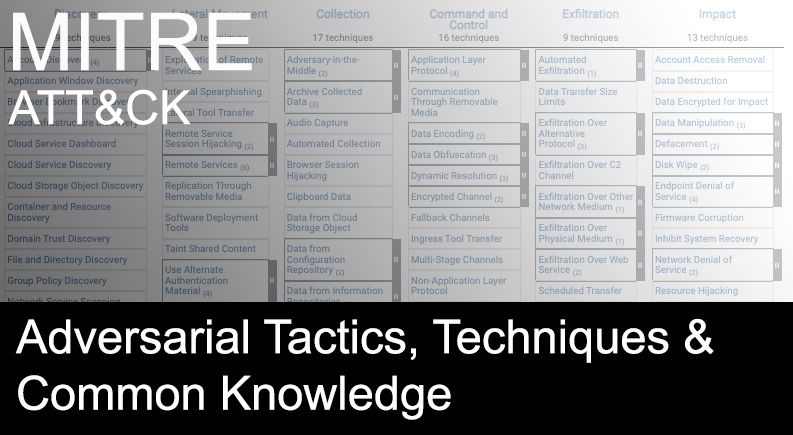
MITRE ATT&CK® stands for MITRE Adversarial Tactics, Techniques, and Common Knowledge (ATT&CK). The MITRE ATT&CK framework is a curated knowledge base and model for cyber adversary behavior, reflecting the various phases of an adversary’s attack lifecycle and the platforms they are known to target. The tactics and techniques abstraction in the model provides a common taxonomy of individual adversary actions understood by both offensive and defensive sides of cybersecurity. It also provides an appropriate level of categorization for adversary action and specific ways of defending against it.
The behavioral model presented by ATT&CK contains the following core components:
- Tactics denoting short-term, tactical adversary goals during an attack (the columns);
- Techniques describing the means by which adversaries achieve tactical goals (the individual cells); and
- Documented adversary usage of techniques and other metadata (linked to techniques).
MITRE ATT&CK was created in 2013 as a result of MITRE’s Fort Meade Experiment (FMX) where researchers emulated both adversary and defender behavior in an effort to improve post-compromise detection of threats through telemetry sensing and behavioral analysis. The key question for the researchers was, “How well are we doing at detecting documented adversary behavior?” To answer that question, the researchers developed ATT&CK, which was used as a tool to categorize adversary behavior.
MITRE ATT&CK now has three iterations:
What is in the MITRE ATT&CK Matrix?
The MITRE ATT&CK matrix contains a set of techniques used by adversaries to accomplish a specific objective. Those objectives are categorized as tactics in the ATT&CK Matrix. The objectives are presented linearly from the point of reconnaissance to the final goal of exfiltration or “impact”. Looking at the broadest version of ATT&CK for Enterprise, which includes Windows, macOS, Linux, PRE, Azure AD, Office 365, Google Workspace, SaaS, IaaS, Network, and Containers, the following adversary tactics are categorized:
- Reconnaissance: gathering information to plan future adversary operations, i.e., information about the target organization
- Resource Development: establishing resources to support operations, i.e., setting up command and control infrastructure
- Initial Access: trying to get into your network, i.e., spear phishing
- Execution: trying the run malicious code, i.e., running a remote access tool
- Persistence: trying to maintain their foothold, i.e., changing configurations
- Privilege Escalation: trying to gain higher-level permissions, i.e., leveraging a vulnerability to elevate access
- Defense Evasion: trying to avoid being detected, i.e., using trusted processes to hide malware
- Credential Access: stealing accounts names and passwords, i.e., keylogging
- Discovery: trying to figure out your environment, i.e., exploring what they can control
- Lateral Movement: moving through your environment, i.e., using legitimate credentials to pivot through multiple systems
- Collection: gathering data of interest to the adversary goal, i.e., accessing data in cloud storage
- Command and Control: communicating with compromised systems to control them, i.e., mimicking normal web traffic to communicate with a victim network
- Exfiltration: stealing data, i.e., transferring data to a cloud account
- Impact: manipulate, interrupt, or destroy systems and data, i.e., encrypting data with ransomware
There are adversary techniques within each tactic of the MITRE ATT&CK matrix that describe the adversary’s actual activity. Some techniques have sub-techniques that explain how an adversary carries out a specific technique in greater detail. The full ATT&CK Matrix for Enterprise from the MITRE ATT&CK navigator is represented below:

MITRE ATT&CK for Enterprise, 2021
Mitre’s website has a much larger in-depth view of the framework and how it can and should be used. Please visit Mitre.org’s website for more details.